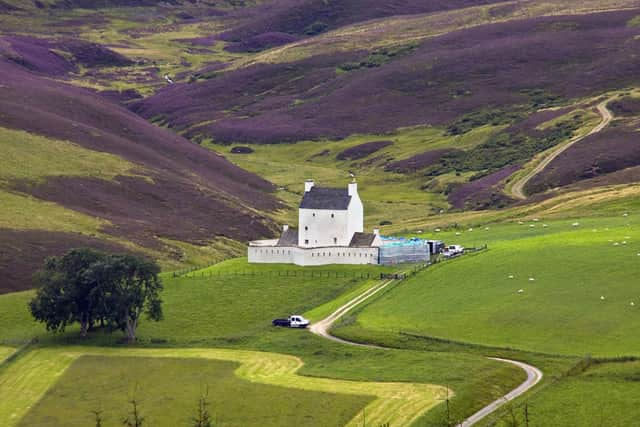Scottish visitor attractions struggle to open this summer as staff shortages bite
Staff shortages are keeping a number of Scotland’s historic and tourist attractions closed at the height of the summer season.
It comes as Corgarff Castle in Aberdeenshire, which played a significant role in the Jacobite risings and the subsequent ‘pacification’ of the Highlands, re-opened last week – three months later than its usual summer season and for just two days a week. It will close again at the end of September.
Advertisement
Hide AdAdvertisement
Hide AdHistoric Environment Scotland, which cares for the castle in the Cairngorms, said challenges in finding ‘high-quality’ staff to re-open Corgarff – which it described as a “hidden gem” – had led to the delay in in re-opening with staffing issues affecting a limited number of sites, predominately in rural areas.


Meanwhile, Just over one-in-10 (12 %) of attractions in its care still has restricted public access given ongoing repair and inspection work.
Gordon Morrison, chief executive of Association of Scottish Visitor Attractions, said Covid had led to staff seeking other roles while the cost of living crisis meant that seasonal jobs and volunteering – which accounts for around 20 per cent of roles in the sector – were now less attractive as people sought more regular employment.
“Certainly, the real challenges that we are facing are more acute than they have ever been in our history,” Mr Morrison said.
Research conducted at the beginning of April, the traditional start to the tourist season in Scotland, found that 45 per cent of members were struggling to fill vacancies from front of house staff to more skilled jobs such as marketing.
Mr Morrison said the pandemic – which led to visitor attractions being closed for long periods – had created a misconception the sector had less job security than others. Meanwhile, Brexit had affected the pool of workers, many staff who had leave-to-remain chose to return to the EU during the pandemic and had not returned.
He stressed that the industry was relatively well paid, with almost half of employers paying the real living wage, and offered good career progression.
A spokesman for Historic Environment Scotland said: “The majority of our sites are now operating seven day opening although we have reduced weekly operations at a limited number of sites where vacancies remain. These are primarily our more remote sites and we are working on opportunities around those vacancies and our site operations. We endeavour to limit the impact to our visitors and the local communities, so we can provide as varied an offer as possible.”
Advertisement
Hide AdAdvertisement
Hide AdOn the organisation’s programme of repairs and inspections, which began at the end of the pandemic to assess the impact of closures on buildings, the statement added: “88% of our sites currently have visitor access. The High-Level Masonry Project, which is looking at the effects of climate change, in combination with other factors, is progressing well and on schedule, with the remainder of outstanding inspections scheduled in over the coming months.
"Many of the inspected sites have re-opened or had increased access. To date we have reopened or increased access at 45 properties involved in the project, and will continue to do this depending on the results of the survey work.”
Comments
Want to join the conversation? Please or to comment on this article.